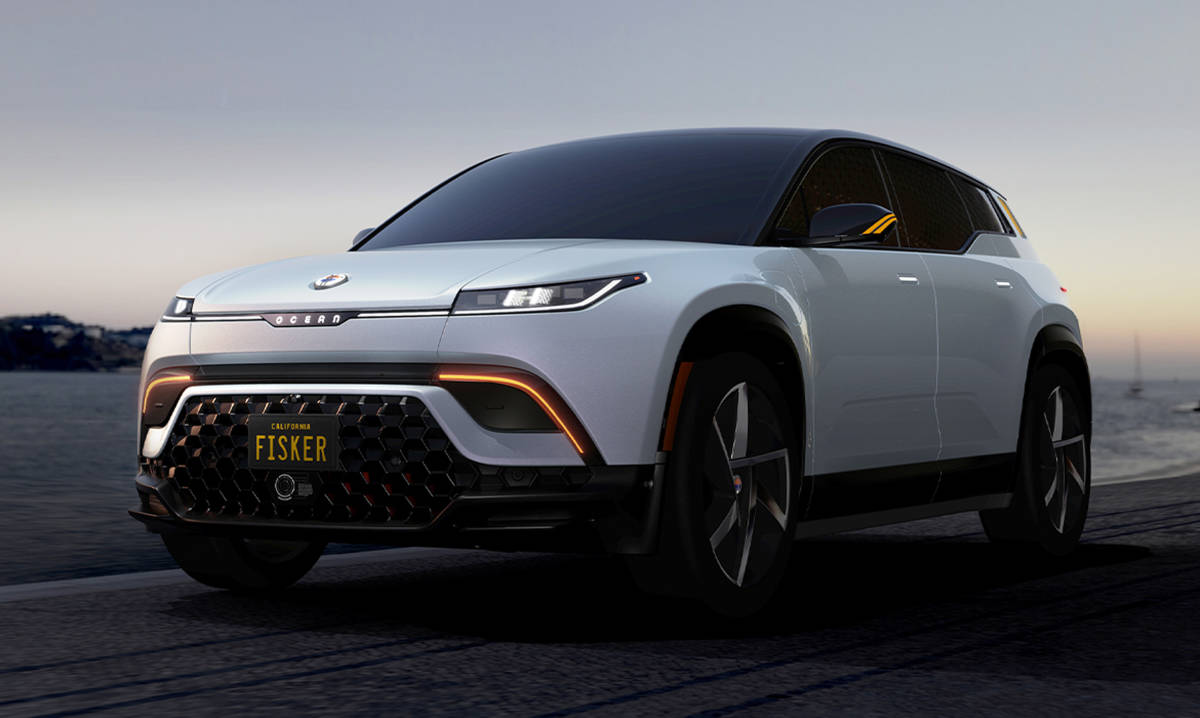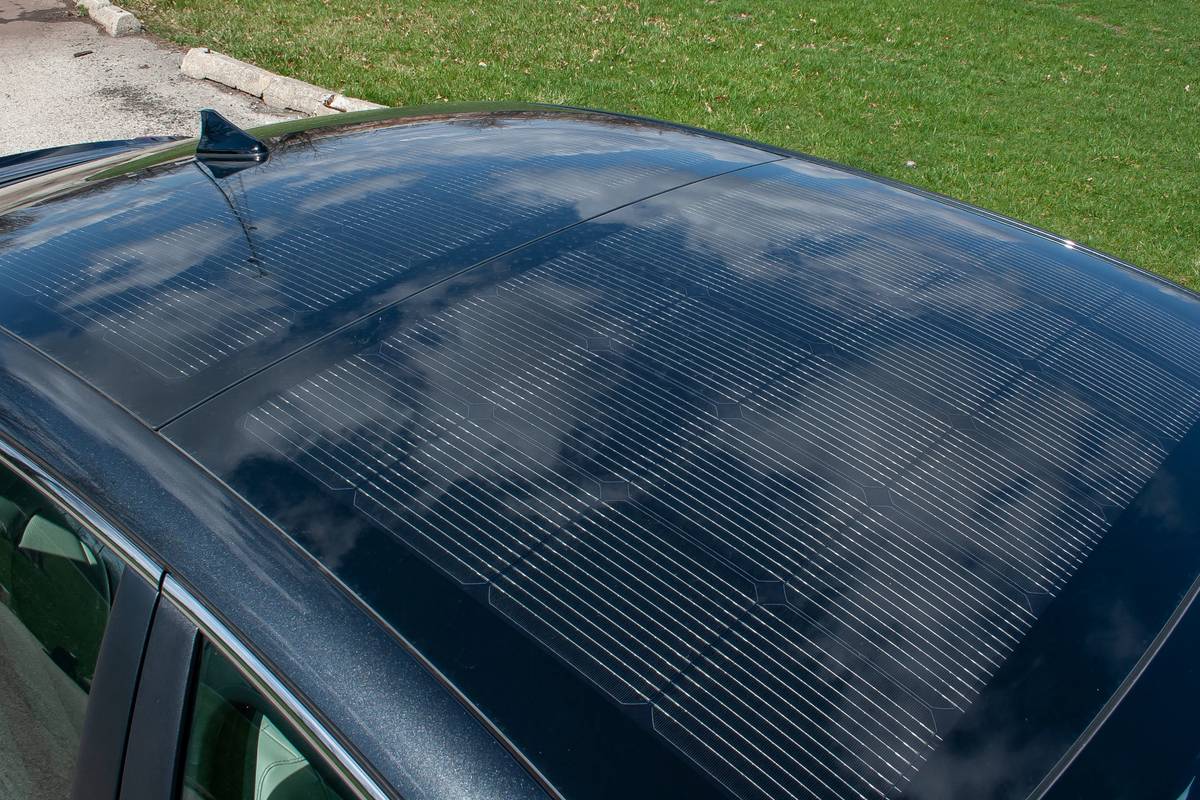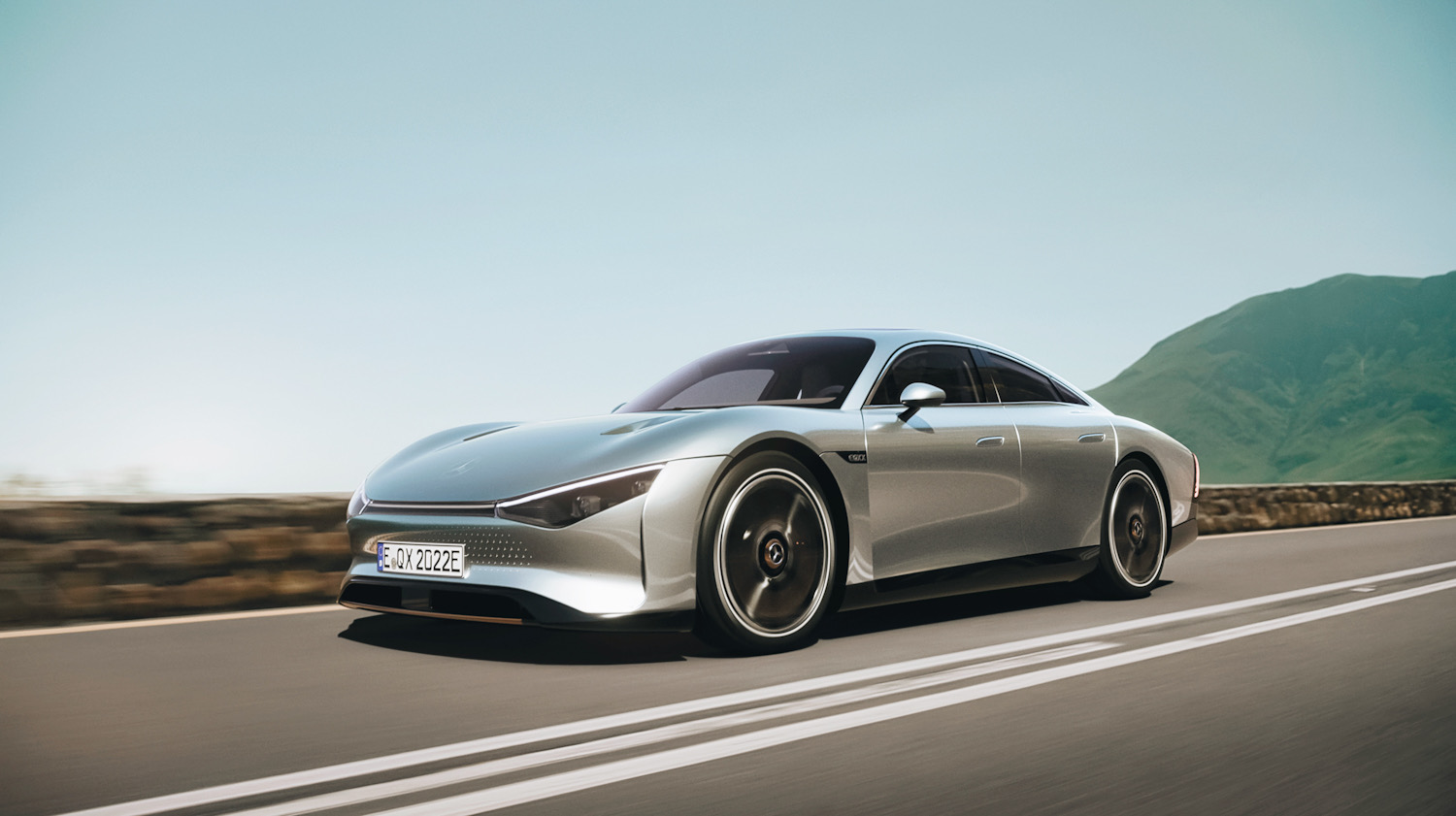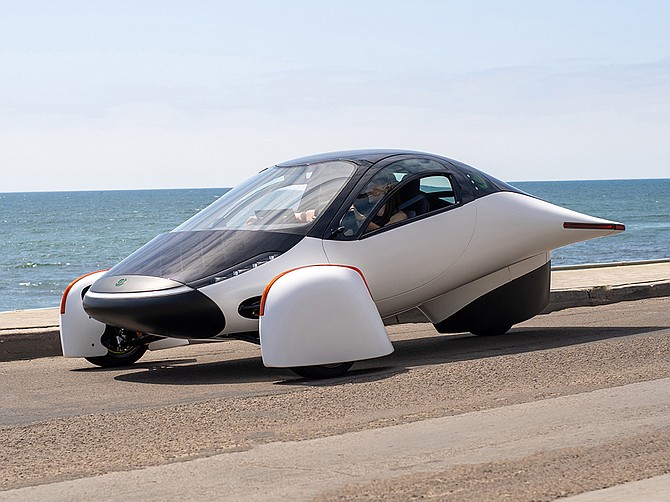Electric vehicles are gaining in popularity, but not everyone is on board. One of the big perceived drawbacks is how long it takes to charge them and having access to somewhere you can plug in to get that charge. If you live in an apartment building or the city, charging can get a bit challenging. But what if you didn’t have to plug in your car to charge? Some companies have solar-powered cars available for pre-order today, but what’s the reality behind these cars? Can they really provide enough power to fit the bill, and at a cost that won’t break the bank?
The automotive industry is still in the early phases of transitioning over to electric completely, which will most likely take another decade or two. We’re seeing the rate of adoption towards battery electric vehicles (BEVs) increase. Between 2020 and 2021, EV sales around the globe jumped 108%, reaching 6.75 million units in 2021. Out of those, 71% were full BEVs, not hybrids. For comparison, in 2012 the total number sold was 125,000. However, BEV manufacturers still have challenges around consumer perception on issues like short driving range and long charging times.1

That’s where solar power may offer a few advantages. I’ve seen this question raised on a bunch of my electric vehicle videos. Why not just stick solar panels on your car? With a significant decrease in solar panel costs, a lot of EV charging locations and parking lots are installing solar canopies. I see them a lot around where I live. Integrating directly onto the car itself seems like a great option, because in theory you wouldn’t need to even plug your car in in the first place. But what’s the catch? 2 3
First let’s take a step back and look at when the concept of adding solar panels to cars began, and how it’s fared so far. The history of solar-powered cars goes back to the 1950s with William G. Cobb from General Motors. Granted, calling this a car might be a little bit of a small exaggeration. It was a tiny 15-inch model car powered by 12 selenium PV cells and an electric motor. More like a car for squirrels.4
The first human-sized model showed up in 1962. It was a 1912 vintage model Baker that was converted by International Rectifier and powered with 10,640 individual solar cells. If we jump ahead to 1980, a team from Tel Aviv University in Israel developed a solar car that was powered with 400 W of solar cells, but it wasn’t exactly a beautiful car. It was a car only a mother could love. With solar panels strapped to the roof and hood, it had a range of about 50 miles and a top speed of 40 mph. It wasn’t going to win any races or gain any points for style.5
In the years that followed, most solar-powered cars were designed at universities for racing purposes and pushing the technology forward, but none could be considered a viable passenger vehicle. Things like range and weight capacity just weren’t there. However, in the last few years, some companies are starting to push the idea that solar panels on cars might be viable for a consumer product.
Solar-powered cars offer several benefits. Just like any other battery powered EV, they’re silent, have zero emissions, and require less maintenance compared to internal combustion vehicles. Recharging the batteries with solar power from the car’s roof can lead to fewer charging stops. If the car could be completely charged from the sun, there would be no “fueling” costs to run the car … in theory. The question remains: can the solar panels actually provide enough power? 6 7
In a nutshell, solar panels generate electricity to charge a battery pack, which in turn is used to provide the power needed to move the car. While some of the prototype racing cars from universities I mentioned directly power the car from solar panels without the need for a battery, the cars coming to market still use a battery pack. All of these cars can still be plugged in and charged up like any other EV.8 9
Although there’s a massive amount of energy to be extracted from the sun, current solar cell technologies still have fairly low efficiency — usually around 15-25% for solar panels — which can make the math for how much electricity you can generate given the amount of space … challenging. Cloudy weather, haze, low sun angles and other issues mean that you might not generate enough electricity to charge the batteries. 10 7
So let’s break that down and attach a few numbers to the problem. How much area is available for solar panels on a car? Now, I’m not a mathematician, but let’s use the same line of thinking as Engineering Explained when he tried calculating this … with some modifications. Let’s use the top area of a Tesla Model 3, which is about 8.7 m². Let’s say that about 60% of that area is usable roof space. If we covered that entire area with solar panels, in the perfect scenario (where we’d make flat earthers happy using a cross-section of the earth) the energy coming from the sun would be 1.36 kW/m². The solar panels could generate 7.1 kW in total.
**Theoretical Power = 8.7 m² x 60% x 1.36 kW/m² = 7.1kW **
For a 75 kWh battery pack, the solar panels could fully charge the batteries in about 10.5 hours.
Theoretical Charging Time = 75 kWh / 7.1 kW = 10.5 hours
I’m not a flat earther and we’ll be driving this fictional car on the surface of a sphere, which means we’d only get about 340 W/m² (4π.radius²), but it actually gets worse than that. Only about 55% of the irradiance would hit the car’s surface since a significant portion is reflected back into space or absorbed by the atmosphere. So a 20% efficient solar cell would give us about 37.4 W/m² in a more realistic scenario.11
Actual Irradiance = 340 W x 55% x 20% = 37.4 W/m²
We also need to consider the efficiency of the battery charging system. Let’s be generous and say it’s 95%. The results: about 185 Watts.
Actual Power= 8.7 m² x 60% x 37.4 W/m² x 95% = 185 Watts
So to fully charge a Tesla Model 3’s battery pack, you might need about 405 hours.
Actual Charging Time = 75 kWh / 0.185 kW = 405 hours
That’s about 17 days to fully charge the car. Not bad if you drive infrequently, but impossible if you have a regular Monday to Friday commute. Oh, and results may vary, depending on your location, which impacts the sun’s angle on the solar panels, time year, weather, etc.
You’re not going to be 100% independent from plug in charging. All of this sounds like a pretty damning conclusion that solar panels on a car just don’t make sense. Even so, the companies that are starting to push this technology are tackling a few things my extremely rough math haven’t factored in.
In 2017, the German startup Sono Motors, unveiled their first prototype of an electric car with solar recharging, the Sion. The EV has 248 solar cells integrated into the body of the car that can boost driving range by 112 km (~70 miles) per week on average, but could go as high as 245 km (~152 miles) per week in peak conditions. Using a fast-charging station to top up, Sion takes about 35 minutes to fill the 54 kWh battery pack to 80% state of charge. The total driving range for the car is about 305 km (~190 miles) and has a top speed of 140 km/h (~87 mph). 12 13
Sono Motors has already made pre-orders available for Sion, but the production isn’t set to start until 2023 with a purchase price of €28,500 (about $32,361). The company plans to deliver the first 14,000 reservations in 2023. In addition, they’re also evaluating solar integration into large vehicles. For example, by integrating thin-film solar panels onto a truck with a 13-meter trailer, under peak conditions in Munich, the roof and sides equipped with solar cells could generate 82 kWh per day. This could result in up to 80% saved energy cost for refrigerated trailers compared to diesel. 12 14
There’s also the SUV market. In 2021, Fisker revealed the Ocean SUV with a solar roof. The company’s SolarSky roof technology can produce energy to provide between 1,500 to 2000 miles (~2,400 – 3,200 km) a year. They have five models with driving ranges between 250 and 440 miles.

They start at $37,499 and go up to $68,999. The start of production is scheduled for the end of 2022 and they just recently announced that they have over 31,000 reservations (about $1.7B in potential revenue). 15 16 Again, you’re not going to cover all of your daily driving needs, but make a small dent in it.

Another company developing solar electric cars is Lightyear, which unveiled the Lightyear One in 2019. This is where the potential range generated per day takes a turn. Their long-range solar-electric car has five square meters of a patented double-curved solar array that achieves 215 W/m². According to the company, 1 hour in the sun can provide about 12 km (~7 miles) of range, and at the end of the day, this can result in 70 km (~43 miles) of extra range. That’s basically the average number of miles driven per day in the US. 17 18 19
One of the big reasons for the high range added per day doesn’t come from the solar panel efficiency, but the cars’ efficient use of that energy. It uses about 83 Wh/km. Compare that to the Tesla Model 3 at about 167 Wh/km.20 It’s expected to reach a driving range up to 725 km (~450 miles) based on the Worldwide harmonized Light vehicles Test Procedures (WLTP). So take that with a grain of salt until we see real world results. The downside for those incredible numbers? The selling price for their car is about €150,000 (equivalent to $170,321) excluding taxes … but it’s expected to be available to customers starting this summer. 21 22

On the flipside of those great mileage and efficiency numbers are some of the bigger auto manufacturers, like Hyundai and Mercedes, who seem to just be slapping solar onto existing designs. A limited edition version of the 2022 Hyundai SONATA Hybrid is equipped with a 22.8% efficient solar roof that, under ideal conditions, will increase the driving range by 2 miles per day. This kind of highlights the difference between slapping solar panels onto an unoptimized car design vs. building a new solar powered car from the ground up with efficiency first. However, these are a bit easier on the wallet, starting at $35,550. 23 Mercedes Vision EQXX is in a similar boat, albeit a little bit better for range added. The 117 solar cells on its roof will provide about 25 km (~15 miles) of extra range in a day under ideal conditions. 24 25 26



This brings us to the solar powered car company that’s really lighting up the competition: Aptera Motors. This is where the think outside the box, build from the ground up approach really hits its stride. This futuristic three-wheeler has been designed to be extremely energy-efficient, being able to reach up to 1,000 miles on a single charge. One of the keys to that incredible range is its light weight, weighing 65% less than a common EV. Combine that with its efficient drivetrain and aerodynamics and you’re using only 30% of the energy of current EVs and hybrids. This is not just about slapping solar panels on a car, but rethinking the whole approach.
How much range would you get with its 700 Watts of solar cells? I live in Massachusetts, so let’s use that as an example. If I drove 30 miles a day, considering the local sunlight conditions, I may only need to charge an Aptera about twice per year … in theory. It’s capable of providing 16-40 miles of extra range to the car depending on the conditions. 27 28 After some fits and starts the company finally opened up pre-orders in December 2020. Aptera’s production and first deliveries are expected to start this year with a price ranging from $25,900 to $50,700. 28 29 30 That’s the best price to range of the entire lot, but it’s also an incredibly unique looking car, which might not be your cup of tea.

The big issue with most of these models is that they can’t be completely solar powered, but they can make a dent in the amount of plug-in charging you’d need. There’s also the issue of limited real estate available for solar cells to be integrated onto the surface of the car. Transparent solar panels could be used for vehicle windows to produce power, but as we saw in my video on that technology, current transparent cells have much lower efficiencies and power densities than silicon cells. 31
The combo of limited surface area, low solar panel efficiency, and vehicles that aren’t designed from the ground up with this in mind, makes this not as compelling from a cost benefit perspective. However, for vehicles that are purpose built for this, like Aptera or Lightyear, the numbers look a lot more appealing.
- Global EV Sales for 2021↩
- Wisconsin Wants To Open Up Electricity Sales For EV Charging, But Restrict Solar-Powered EV Chargers↩
- Solar-Powered EV Chargers, EV News Today, EV Energy Independences, Biosphera Genesis Housing Module↩
- ↩
- First Solar Car↩
- Solar Cars – Pros And Cons↩
- 6 Benefits and Drawbacks of Solar Energy Cars↩↩
- How do solar panels work?↩
- All You Need to Know About Solar-Powered Cars↩
- The Challenges of Solar Powered Vehicles | Guest Blog↩
- Why Don’t Solar Powered Cars Exist?↩
- Sion↩↩
- Sono Motors Presents Design of the Sion↩
- Significant Potential of Solar Integration for Electric Trucks & Refrigerated Trailers↩
- Fisker Ocean↩
- Electrek – “Fisker announces over 31,000 Ocean reservations totaling $1.7 billion in potential revenue and ‘world leading warranty program’↩
- Lightyear One↩
- Lightyear One – Technology↩
- Lightyear One – Reserve↩
- WHAT IS WLTP AND HOW DOES IT WORK?↩
- Hyundai Sonata Hybrid Review: The Solar Roof Is Really Good For One Thing↩
- VISION EQXX↩
- Mercedes-Benz Wants to Make the Solar-Powered Car Happen↩
- How to Watch the Mercedes-Benz Vision EQXX EV’s Unveiling Live↩
- Aptera – Vehicle↩
- Aptera – Reserve↩↩
- Aptera introduces third alpha version of its SEV, enters beta phase before full production↩
- Aptera unveils super-efficient electric car with up to 1,000 miles of range and solar power↩
- Nanoparticles enable completely clear, industry-sized solar windows (yes, they’re finally here and targeting 5% efficiency↩
- KBB – “Average Miles Driven Per Year: Why It Is Important”↩
- Tesla Model 3 Long Range Performance↩
















Comments